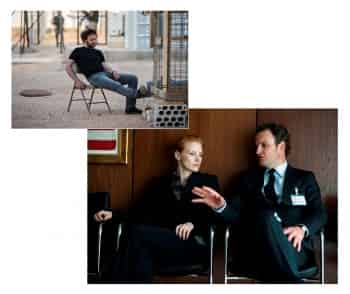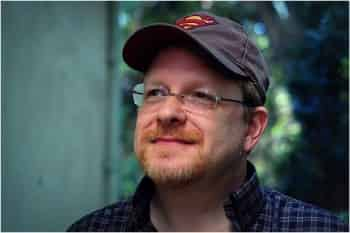Bonus
-
Building a character
Characters should be built one layer at a time, using small touches of colour. Naturally, this approach demands both time and patience from the reader, as well as a willingness to explore the character. In Darren’s review of the film Zero Dark Thirty, we find this about one of the characters: “The “enhanced interrogation” in the film is mostly conducted by Dan, the CIA operative played by Jason Clarke. Clarke is not a low-level army officer. He’s a veteran CIA officer. He keeps (and feeds) monkeys. He has a PhD and is characterised as quite intelligent. He uses words like “tautology”, and it’s clear that he has some idea what he is doing. While he manipulates those people in his custody, he is consistently portrayed as level-headed and rational. He’s not an angry sadist lashing out some pent up frustration or aggression at a hapless victim.”
He also adds: “He might be smart, and he might be educated, but it’s clear that he has been tainted by what he is doing. Mid-way through the film, he opts to get out of the torture unit. And he complains about the death of his monkeys. It’s a moment that exists to make his priorities clear. This is a man who routinely tortures and causes suffering to human beings. At the end of it all, however, the only sympathy he has is for a bunch of monkeys” (“Who We Are In The Dark: Zero Dark Thirty & Torture…” Darren, them0vieblog.com, January 21, 2013). This is a rather deductive analysis because there are no large explanatory scenes in which the character expresses his thoughts and motivations. Viewers must bring their own interpretations to the film.
-
Giving your characters names
Cathy Perkins explains how, when she develops characters, she gives them names (“Building 3-D Characters,” Cathy Perkins, http://thethrillbegins.blogspot.ca, October 25, 2012). We attach a certain amount of importance to a character’s name. We give our characters short names, generally with two syllables and with a distinctive sound. This is especially true for recurring characters.
-
But what were they saying? (Tete-a-tete)
-
Focussing on the characters
We’ve already discussed Mark Waid at length, along with his writing techniques focusing on character rather than on large and complex machinations. We feel this is a product of our time. In his analysis of Skyfall, FamousMonster states, “The screenplay, written by John Logan, Neal Purvis, and Robert Wade, is a swaggering return to classic Bond, with an intense focus on characterization and action, as opposed to some of the more recent Bond films, which seem primarily concerned with car chases and stunt sequences” (Movie Review: Skyfall, FamousMonster, http://www.geeksofdoom.com, November 9, 2012).
A few months before, Mendes spoke similarly about the movie: “Yes, they do have a history […]. It’s much more personal story than your traditional ‘I’ve got a nuclear device and I’m going to blow up the world, Mr. Bond.’ […] You know, just making it bigger is not going to make it any more scary” (“We’ve Been Expecting You Mr. Bond,” Dan Jolin, Empire, n° 280, October 2012, p. 94-103.).
Without even being aware of it, Joss Whedon may possibly go in the same direction for his Avengers 2. “On the tone of the film, he [Whedon] said that The Avengers 2 would go deeper instead of bigger. Honestly after a huge battle like the one we saw in the first film, it be nice to get a more personal story and take a step back from the big hefty action. Apparently he wants to go so deep and personal that it will be painful.” (“Joss Whedon Talks ‘Avengers 2′ Script, ‘S.H.I.E.L.D.’ TV Show & Marvel Films,” eelyajekiM, www.geeksofdoom.com, January 11, 2013).
-
Timing Issues
There is a phenomenon that occurs in various forms of art (music, movies, etc.), where one artist’s production is in tune with the tastes of the day. When Mark Waid was asked about the increased interest in his work, he said, “I’m not doing anything I haven’t been doing the last 10 or 15 years in terms of how I approach story, how I approach characters, how I approach narrative. At this exact moment there seems to be room in the marketplace for stuff that is a little less formulaic and a little less like what we’ve seen before. A little less dark. A little less dystopic, without being quote-unquote “fun.” Maybe that’s what people are responding to. I don’t know” (“Interview #22 – Mark Waid,” comicsreporter.com, January 10, 2013).
The reverse can also occur: an artist can have a very successful work, and then do something similar that just doesn’t take off. This happens not only in the arts but also in any form of innovation.






